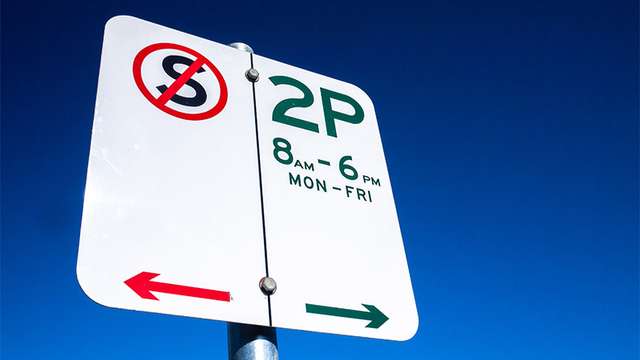- parking
Parking smart: the basics on parking laws

Updated 29 Nov 2019
Rachel White

Parking restrictions and regulations are set in place by the local council. To avoid being stung with a ticket, it is recommended you check with the council – perhaps through its website - to get the most up to date parking information on the local area.
While the where, when and how long you can park rules can change from town to town, there are some clear signs you can look out for that will keep you free of pesky fines . . . as long as you follow them!
Parking signs
Most cities display road signs alerting you to parking restrictions, such as days and time limits. Note that roads around stadiums and event areas may have special parking restrictions which are relevant only on days that events are held.
Keep an eye out for signs on poles or structures at the edge of the road and the footpath. These often carry parking information. They are usually spaced out at regular intervals and are easy to view. Arrows on these signs will also signify which parking spaces are restricted. If you spot a sign that has an encircled S or P with a line crossed through, don’t park there - it means no parking or stopping.
Not all signs are to be found on poles or on the sides of buildings. In some instances, there may be signs painted on the road. For example, a continuous painted yellow line on the edge of the road near the gutter signifies a no parking zone.
Why do we have parking laws?
Parking laws promote better traffic flow - roads would be a mess if all streets were treated like a typical car park. They also can make for a safer environment for road users and pedestrians too.
It also can’t be forgotten that parking fees and fines are a revenue stream for local councils that are used towards improving roads and infrastructure. So, if you do get stung, at least your penalty should be going towards improving the system.
Basic parking laws
- Obey the signs
- Don’t obstruct pedestrians or other traffic
- Parallel parking means the vehicles left wheels are next to the gutter
- Don’t park on the wrong side of the road, facing the wrong way
- Park within the marked parking bay. Stay within the lines
- Always keep at least three metres between your car and a continuous centre line when parking on a narrow street
- If parking signs instruct specific parking angles, obey the sign
- If parking is allowed in the centre of the road, drive front in, don’t reverse in
Where not to park
- On footpaths, bike paths, footpath ramps or a dividing strip
- Bus stops, slip lane, tram or bus/truck lanes
- In emergency or essential services designated parking areas
- In designated disabled parking spaces (if not disabled)
- Across driveways or footpaths
- On a nature strip in a built-up area
- Don’t double park next to a parallel-parked car
- On a painted traffic island
- On the highway (unless it’s an emergency and you’re in the emergency lane)
- Next to a traffic obstruction
- On ‘keep clear’ road markings
- Anywhere where signage notifies you cannot park
- Bridges, tunnels and ramps
How much space to leave when parking?
Leave 20 metres between you and intersections with traffic lights and level crossings.
The 20-metre rule is the same if parked behind bus/tram stops and pedestrian crossings, but if you are parked in front of a bus/tram stop and pedestrian crossing then there needs to be at least a 10-metre gap.
Leave 10 metres between you and an intersection without lights, between you and safety zones, and at bike crossings with lights.
Parking fines
The police, council officers and, sometimes, road officers in your particular state can issue parking fines and/or have your vehicle towed when you breach parking laws.
The only time you are likely to get out of a fine is if you are encountering a medical emergency, to avoid an accident, if it was unsafe not to stop, you broke down or it was to comply with another road rule.
So, there are the basics. Parking regulations can be a headache but, hopefully, this will give you enough info to park smarter and avoid those pesky parking fines or hefty towing fees.

Written By
Rachel White
Rachel spent her early adult life around cars, motorsport and hands-on with her own cars. This interest moved into various careers within the Automotive industry. Joined with her passion for writing, Rachel loves putting the two together to share her experience, so we can all become AutoGuru’s.